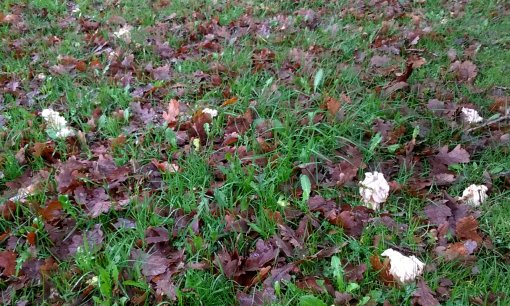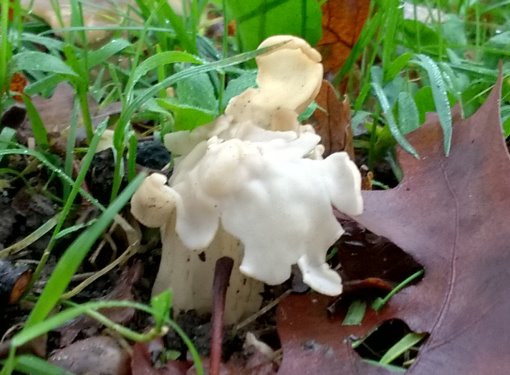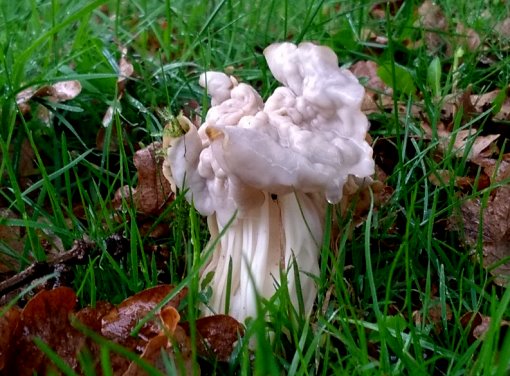White Helvella
By Mike on Sunday, November 8, 2015, 22:26 - Permalink

Early autumn was quite dry this year and many of the earlier fungi species weren't very abundant - but now, late autumn has turned very wet - and some of the later species are springing up in huge numbers.
I found a lot of white Helvellas on the green outside my house - but in the end, I decided against picking and eating them - read on to find out why...
Identification Of Wild Fungi
The description here is not intended to be sufficient for conclusive identification of these wild fungi - the reader should understand that the possible outcomes of misadventure with wild-gathered fungi include serious illness and death.IT IS YOUR OWN RESPONSIBILITY to take adequate steps in identifying any fungi you gather for the table - doubly so if you are intending to share them with someone else.
Informal descriptions, such as the one on this page, are not adequate for full identification - it's just good sense to fully and independently verify everything you read here.
Rules of thumb or folk wisdom identification methods are frequently unreliable.
Consult a comprehensive identification guide (I recommend Roger's Mushrooms (site no longer available - see here) and Wild Mushrooms Online) or best of all, talk to a living human expert mycologist.
What is White Helvella?
Helvella crispa - a fungus found in wood edges and grassy places - it is whitish-cream in colour and has a hollow, fluted stem and a cap that is crumpled and wavy - the flesh is rubbery and thin, but quite fragile.

Mine were found growing near oaks. I found half a dozen of them alongside one path, then across the road on another piece of grass (also near an oak tree), I found a large patch where there were more than a dozen specimens.

My reference books describe this fungus as edible (although some also say it's not especially good - either without giving a reason, or on account of the hollow stem and curled cap making it difficult to clean and rid of insects.

That alone wouldn't have put me off trying it, but further research reealed that this species has been found to contain monomethylhydrazine. This substance is toxic - in the immediate sense that it can cause poisoning, but it is also suspected to be a carcinogen. If monomethylhydrazine sounds familiar, it may be because the chemical is used as rocket fuel.
Apparently it's possible to remove the toxin either by boiling and draining, or drying the fungus and reconstituting it, but really, I think I'd rather just not bother. This is one that I am happy to be able to identify, and then just leave alone.

